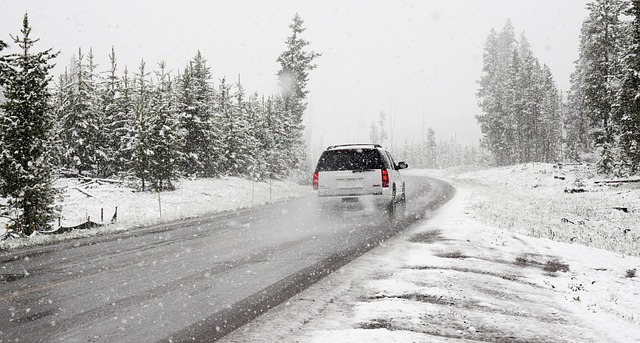Understanding Tread Patterns and Grip for Cold Season Driving
Winter driving demands tires designed for low temperatures, snow, and ice. This article explains how tread patterns, rubber compound, studs, and siping work together to improve traction and braking. It also covers fitment, pressure, maintenance, storage, alignment, and relevant regulations to help drivers make informed, safety-focused decisions.

Winter conditions change how a vehicle interacts with the road. Cold temperatures stiffen ordinary rubber, while snow and ice reduce contact area and lower traction. Choosing tires with the right tread design and compound matters for grip and braking, but fitment, correct pressure, and ongoing maintenance are equally important for reliable performance and safety through the season.
Tread and traction on snow and ice
Tread design determines how a tire channels snow, slush, and water away from the contact patch. Deep, widely spaced grooves help pack and release snow—snow-on-snow contact can actually improve traction compared with a smooth surface—while narrower channels and siping help evacuate water and slush to reduce hydroplaning. For ice, macro-patterns provide stability while micro-features such as small biting edges maintain traction. Modern winter treads balance void areas and blocks to manage snow, ice, and mixed conditions without compromising steering response.
Studs and siping: how they change grip
Studs are metal inserts that can increase mechanical bite on hard-packed snow and ice, improving low-speed traction and braking on slick surfaces. They are most effective on abrasive ice but can wear pavement and may be restricted by local regulations. Siping refers to small slits in tread blocks that create additional biting edges; these enhance grip on wet, slushy, and icy roads by allowing the tread to flex and conform to surface irregularities. The combination of studs and dense siping is beneficial in areas with frequent ice, but the best choice depends on typical winter conditions and rules in your area.
Tire compound, rubber, and braking performance
Winter tire compounds remain flexible at low temperatures whereas all-season compounds stiffen and lose grip. Softer rubber formulations contain polymers and silica blends that resist hardening, preserving traction and shortening braking distances on cold pavement. Braking performance is a product of compound flexibility, tread design, and contact pressure; a winter-specific compound will typically reduce stopping distances on snow and cold asphalt compared with a summer or all-season tire. Consider compound trade-offs: very soft blends can wear faster in milder conditions, so choose based on expected temperature ranges.
Fitment, pressure, and alignment considerations
Correct fitment—matching wheel size, load rating, and speed rating as recommended by the vehicle manufacturer—ensures intended performance. Proper tire pressure is critical; cold weather can lower inflation pressure by about 1–2 psi for every 10°F drop in temperature, which affects contact patch and braking. Regularly check pressure with a calibrated gauge. Wheel alignment and suspension condition influence even wear and consistent grip; misalignment can cause uneven tread wear that reduces traction and compromises braking, particularly on wet, icy, or snowy roads.
Maintenance and storage to preserve tread life
Routine maintenance extends tire life and maintains traction. Rotate tires at regular intervals to promote even wear, inspect tread depth and look for irregular wear patterns, and replace tires before tread depths fall below safe levels for snow and ice. During off-season storage, keep winter tires in a cool, dry place away from direct sunlight and ozone sources; store mounted tires upright or stacked per manufacturer guidance, and maintain proper inflation for mounted tires. Cleaning tires before storage removes road salts that can degrade rubber and wheel components.
Regulations and safety considerations
Regulations about winter tires and studs vary by jurisdiction; some places require winter or all-season tires with specified tread depths during certain months, while others allow studded tires only during limited periods or prohibit them entirely. Always verify local rules and follow safety guidelines: tire tread depth, appropriate compound, and correct installation all contribute to reduced crash risk. Safety also includes matching tire types on a vehicle (mixing significantly different tread types on the same axle can impair handling) and replacing tires in axle pairs when necessary.
Winter tires are a system of design choices—tread pattern, siping density, studs, and rubber compound interact with fitment, pressure, alignment, and driver behavior. Evaluating typical local conditions such as frequency of snow, ice, and cold pavement will guide choices between studded and non-studded options and between different compound trade-offs. Regular maintenance and adherence to local regulations help preserve performance through the season.
Understanding these elements helps drivers select and care for winter tires to maintain traction, improve braking performance, and support overall safety in cold-weather driving.





